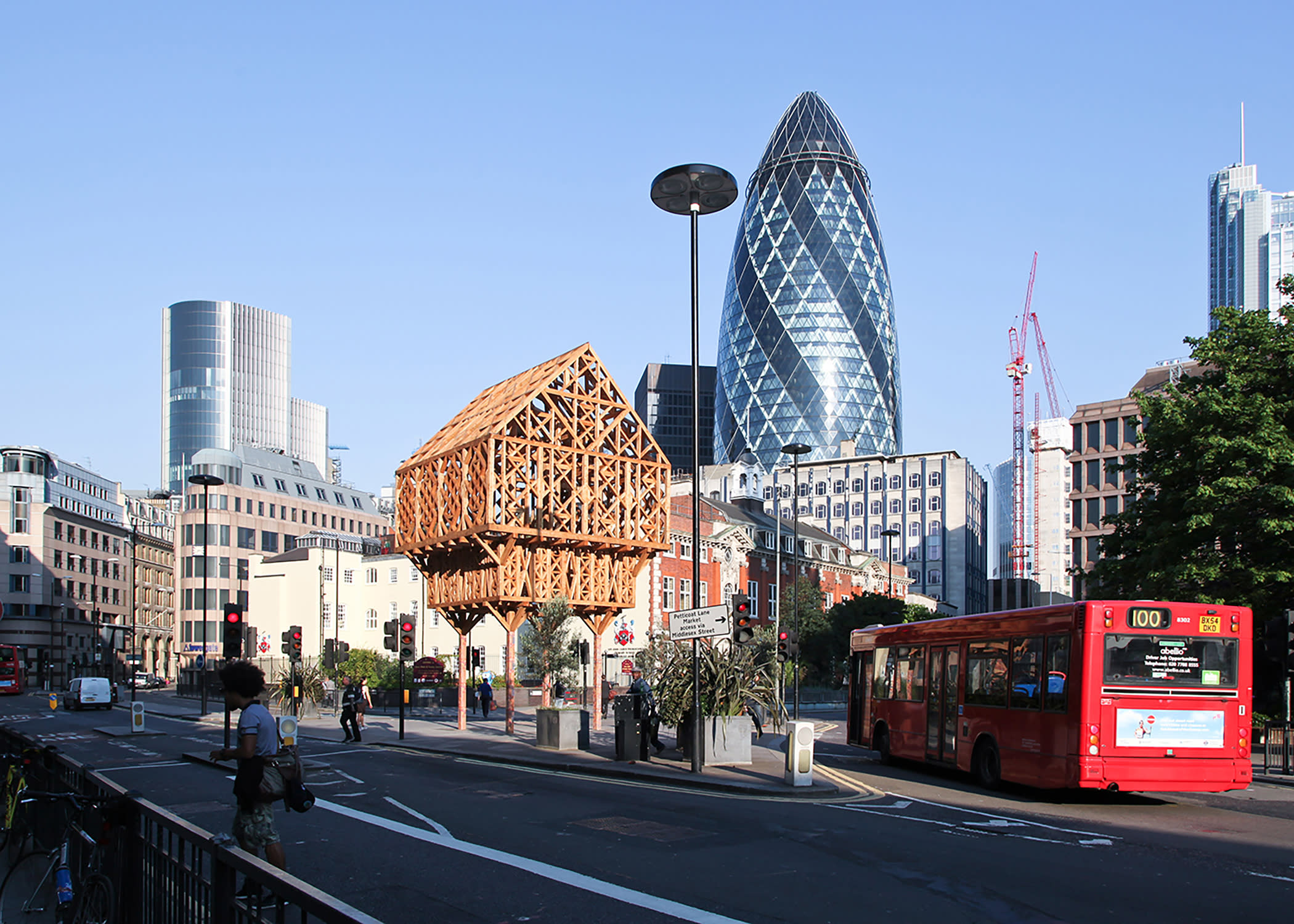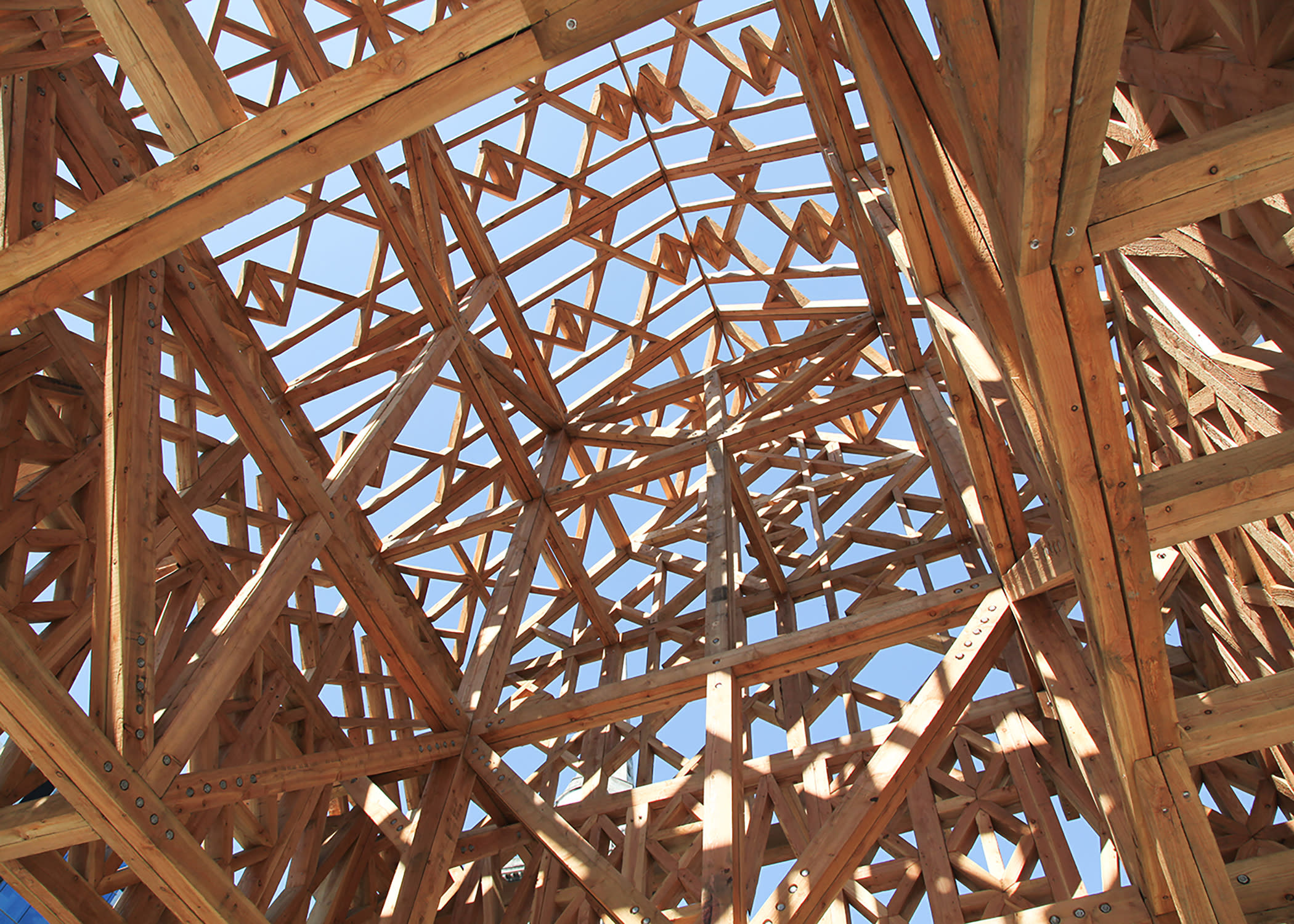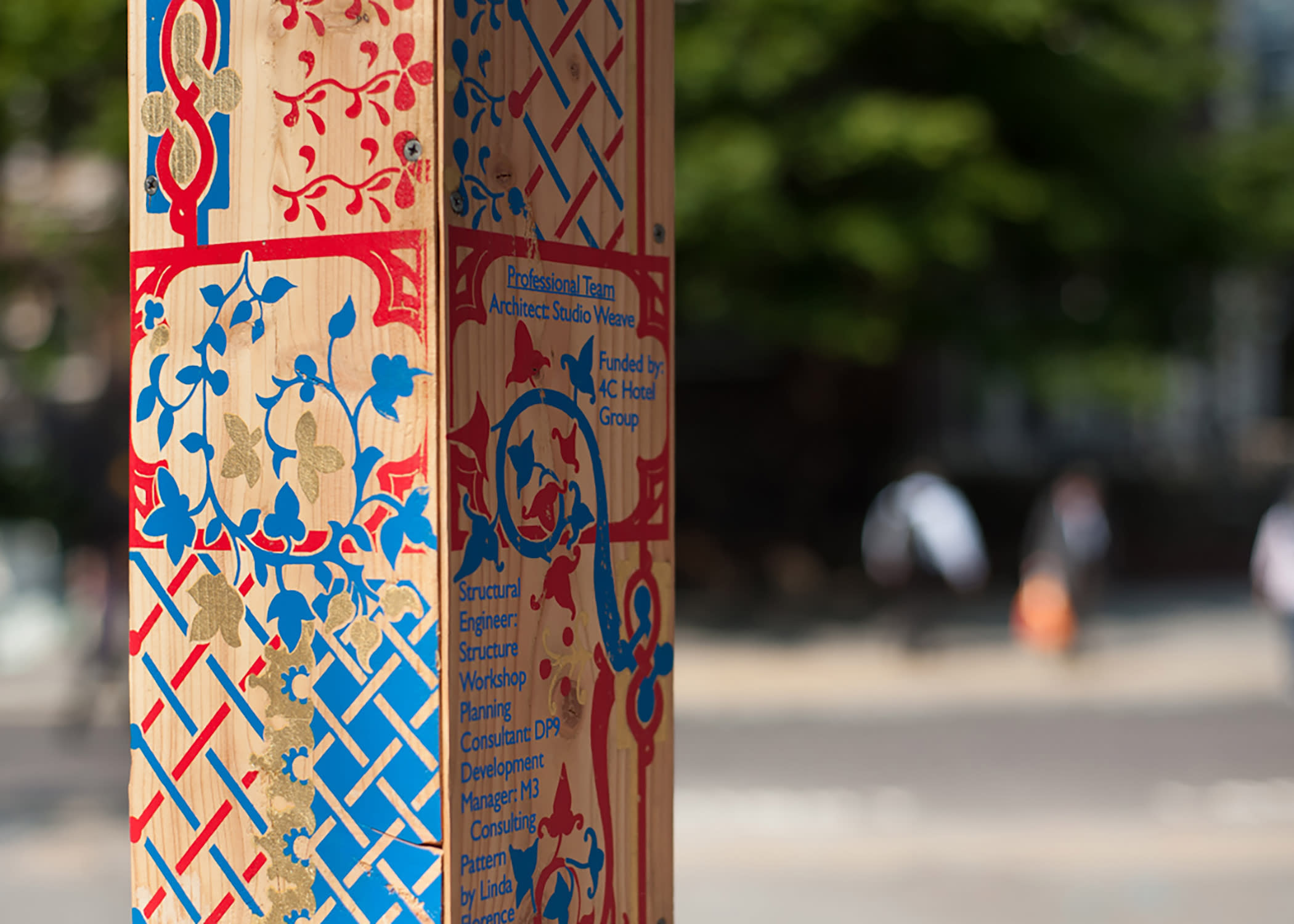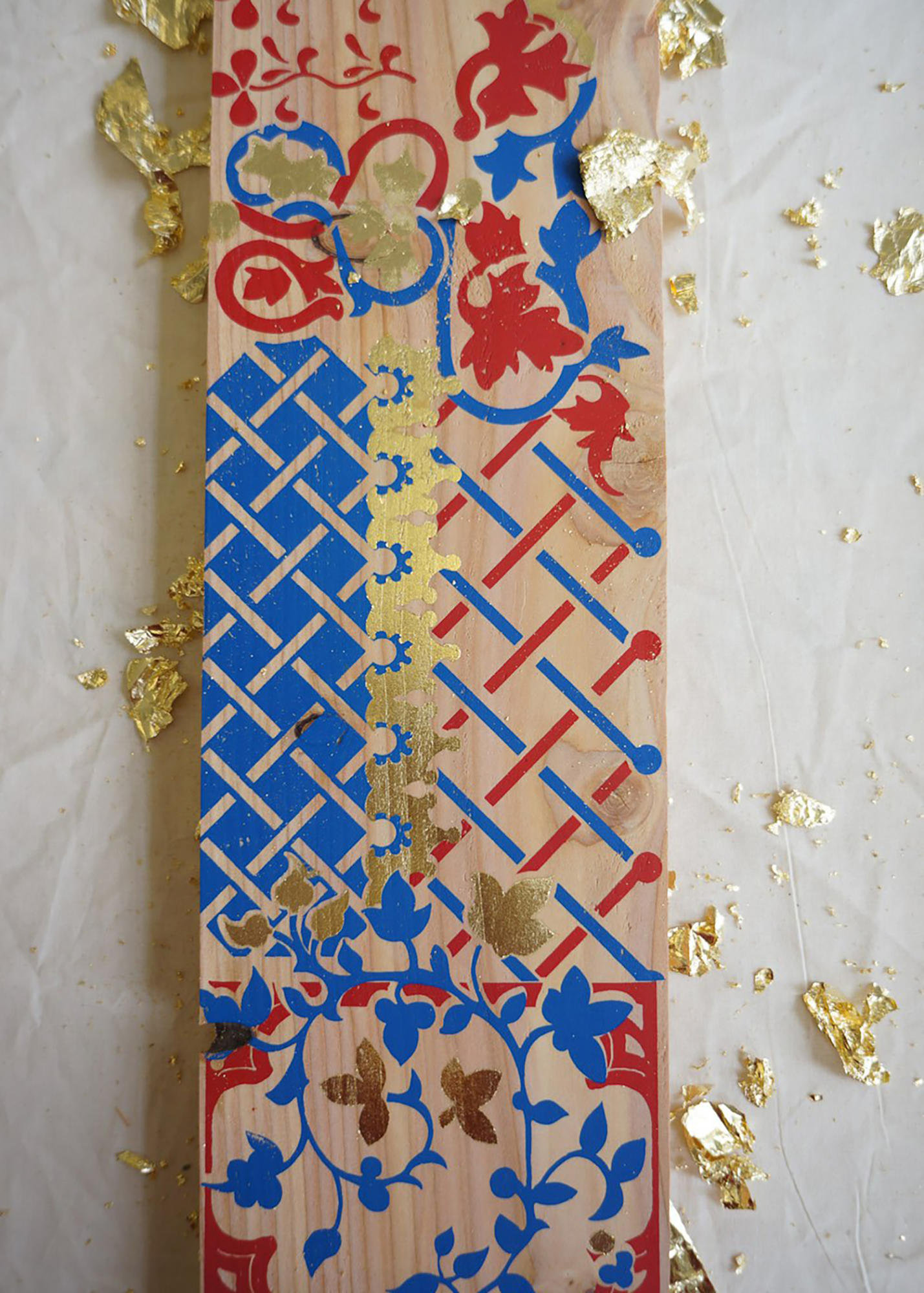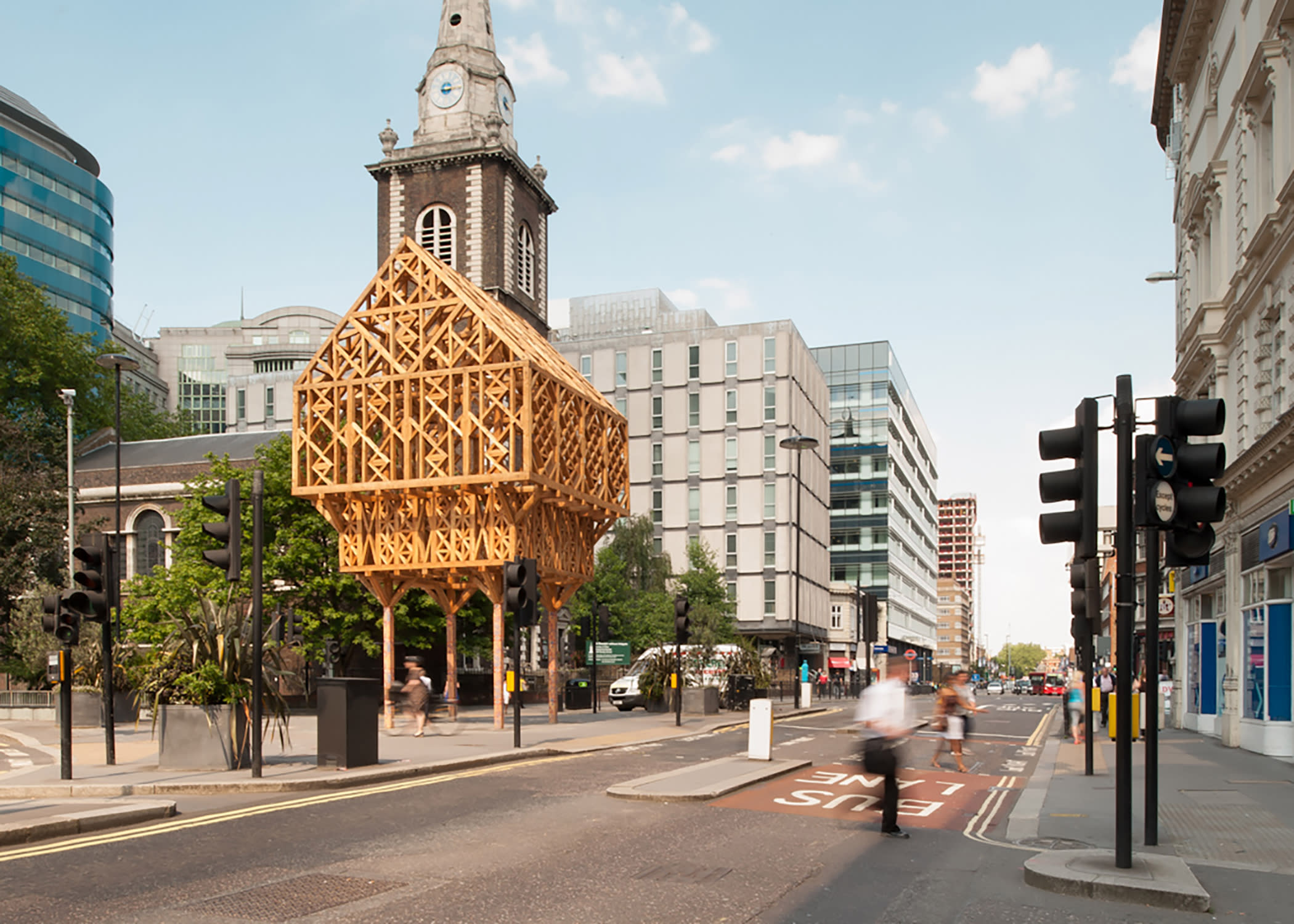Studio Weave were commissioned to develop proposals to celebrate the historic eastern gateway into the City, as part of the core programme for the London Architecture Festival 2012. The historic eastern gateway into the City existed as a physical entity from Roman times until 1761 and the site remains a strategic position in London today. The project sought to signal the threshold between the site’s history and the vast transformation underway in the buildup to and following the London Olympics 2012 programme.
Our proposal ‘Paleys upon Pilers’ delivered an intricate timber palace perched on pillars that marked the spot of Aldgate and commemorated its most distinguished resident, Geoffrey Chaucer.
- - -
The design was inspired by two dream poems by Chaucer, which he wrote while resident in the rooms above the gate from 1374 to 1386. The House of Fame and The Parliament of Fowls both include images of fantastic dream-like temples of impossible materials and scale, elevated on precarious, precious structures and accompanied by walled places with City-like characteristics.
Paleys Upon Pilers was an abstraction of the uppermost room of the old gate and speaks to Chaucer’s elevated temples, while providing a focus for the public space and highlighting the extent of the old City walls. The structure consisted of a timber embroidery and sits in the air above the busy Aldgate High Street, supported on pillars decorated with images from the illuminated manuscripts.
- - -
